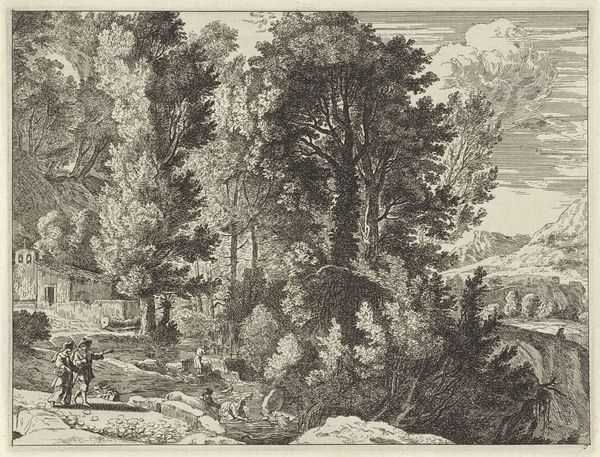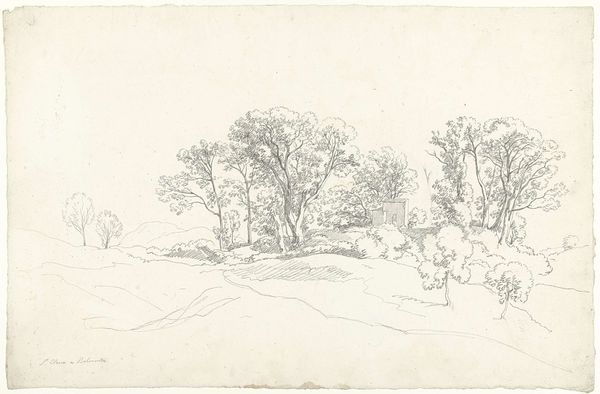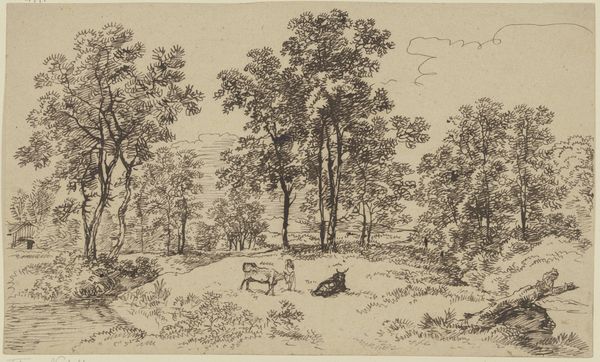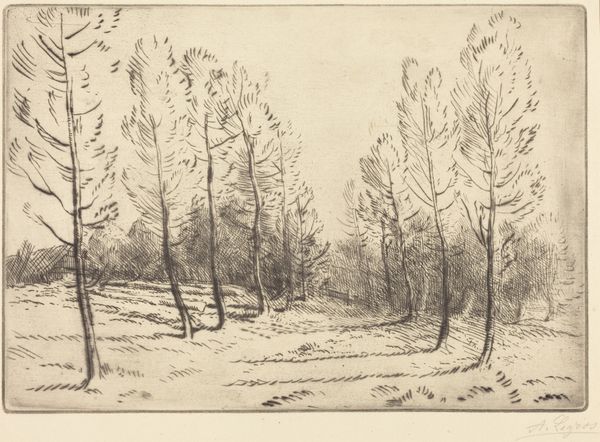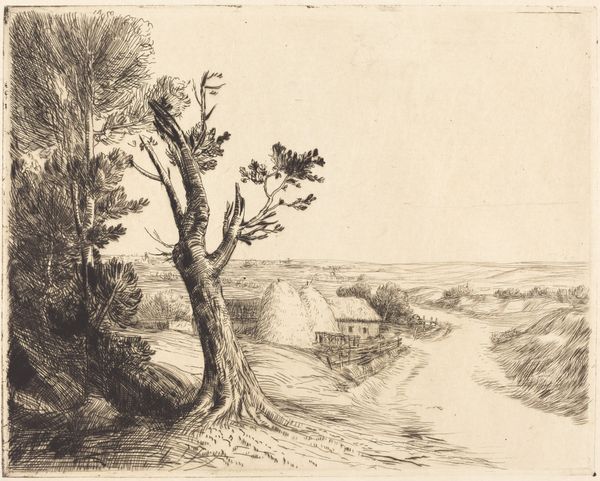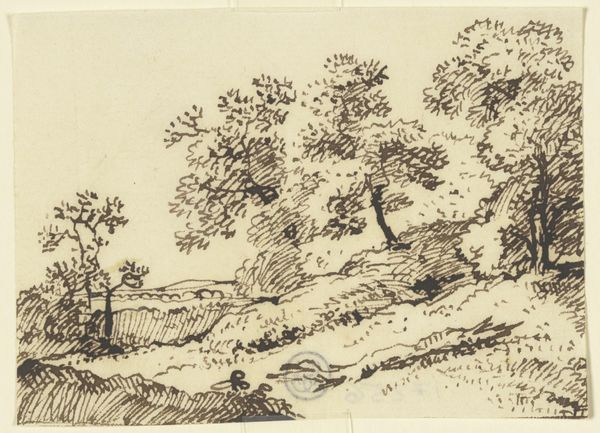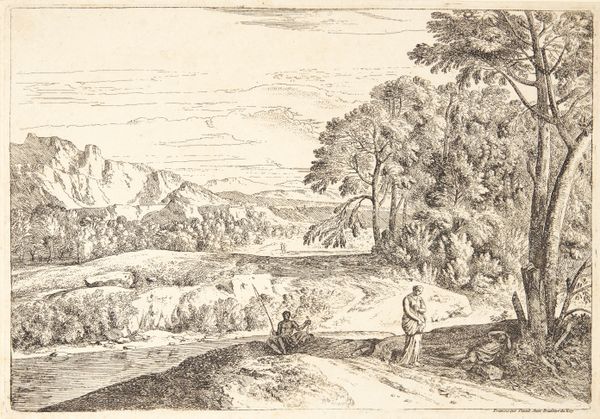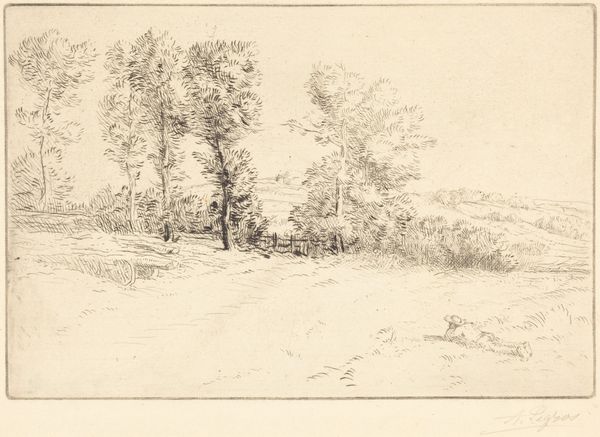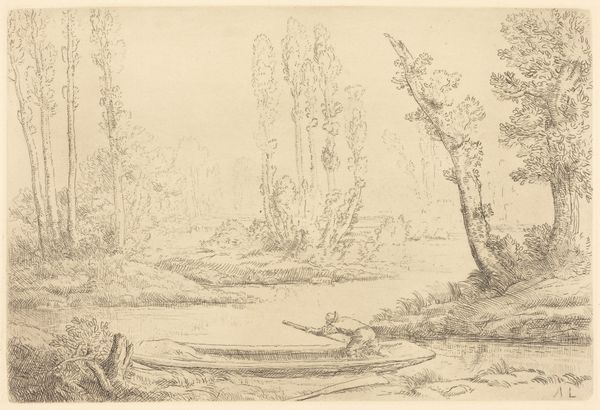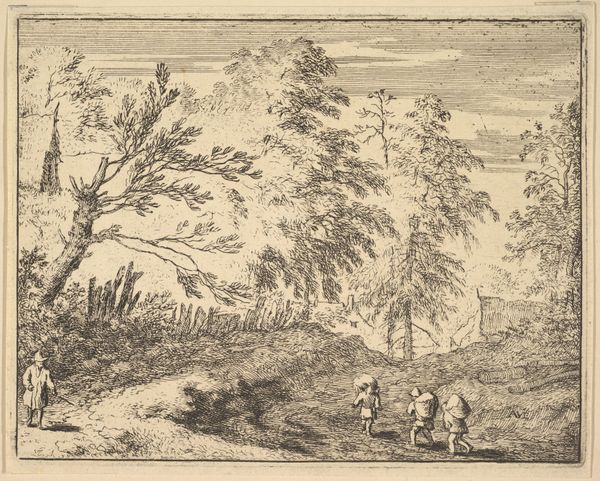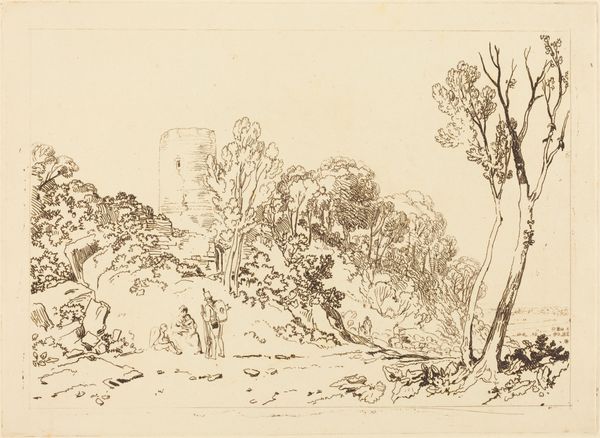
Copyright: National Gallery of Art: CC0 1.0
Curator: Looking at "Petit Bosquet au Chasseur," Jean Jacques de Boissieu's etching from 1772, I'm struck by the feeling of stepping into a dream... almost as if this hunter and his bosquet exist outside of time itself. Editor: It’s interesting you say dream, because the materiality screams reality. Think about the labor required for this detailed etching, all those meticulously carved lines—it is all about skill, craft, work. How can this image suggest escapism when the material literally chains the artist? Curator: Maybe that contrast *is* the dream, you know? He's grounded in the material, absolutely. Look how the delicate network of etched lines capture the texture of leaves and bark. And it becomes this meditation— almost an alchemical transformation where everyday labour manifests in another reality... a landscape conjured out of metal. What about the way the single figure invites narrative interpretation? Editor: Perhaps we’re both romanticizing this piece. The "little grove" probably refers to meticulously arranged hunting grounds, with their location, access, and function all linked to wealth and power. How do you see the function and purpose impacting how Boissieu composed it? Curator: I get that! He doesn’t exactly conceal labor when, through that line work, he lets the evidence of toil show right there on the page. And the man almost blends into his natural environment through material choice as well! To me, though, it's more like a peaceful coexistence, something almost pastoral. Even if the forest is tamed. He could’ve been critical of these systems... instead, to my eye, his world offers acceptance and calm. Editor: Maybe, though maybe you see too much of the forest and not enough of the wood. From this Baroque composition, which takes a scene that you described earlier as meditative or dreamlike, a scene which in the eighteenth century most audiences would recognize for a hunting function, how do these formal artistic considerations contribute to how the landscape would be valued or thought of at the time? Curator: You know, your point makes me think maybe Boissieu aimed for some synthesis. His technique allows him to examine this place critically— and I have romanticized it too much— by really investing time in making the print and in looking. A space created not for simple leisure or industry. Instead, this piece exists between worlds and intentions... a visual embodiment of an evolving attitude. Editor: Yes, an embodiment dependent on access to particular materials, means, training. And from my perspective, with an intent not only towards making "fine art," but commenting or complicating its value, and the system from which its materials are extracted from the land and its makers.
Comments
No comments
Be the first to comment and join the conversation on the ultimate creative platform.
